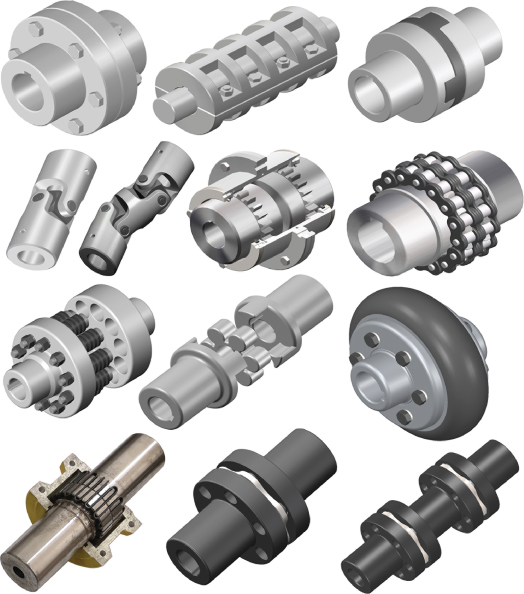13 Couplings and Clutches

Nomenclature
- D i
- inside diameter of clutch surface, mm
- D o
- outside diameter of clutch surface, mm
- d
- shaft diameter, mm
- F
- normal force at clutch surface, N
- f
- coefficient of friction
- K A
- service factor
- n
- rotational speed, rpm
- [n]
- limiting rotational speed, rpm
- p
- pressure on frictional surface, MPa
- [p]
- allowable pressure on frictional surface, MPa
- T
- nominal torque, N mm
- T ca
- design torque of a coupling or clutch, N mm
- T f
- friction torque, N mm
- [T]
- rated torque of a coupling or clutch, N mm
- x
- end float, mm
- y
- axial misalignment, or parallel offset, mm
- z
- number of contact surfaces
- α
- angular misalignment, °
13.1 Introduction to Couplings
13.1.1 Applications, Characteristics and Structures
A coupling is a device used to connect two shafts end to end to transmit power and torque. The output shaft of a driver, such as a motor or engine, is connected to the input shaft of a transmission, or a driven machine through a coupling (Figure 6.1) [1]. Since power units, transmission units and driven machines are often manufactured separately, couplings are indispensable in mechanical power transmission system. They are widely used in machines in automotive, petroleum, chemical, gas, electric power and steel and other industries.
Apart from the primary function of connecting shafts ...
Get Analysis and Design of Machine Elements now with the O’Reilly learning platform.
O’Reilly members experience books, live events, courses curated by job role, and more from O’Reilly and nearly 200 top publishers.

